Imagine going to a doctor and instead of being given new medications, the doctor prescribes time in greenspaces (“nature prescriptions”) such as parks, gardens, forests or bluespaces such as lakes, oceans, or rivers. Such prescriptions are starting to be utilized by healthcare providers due to the exponentially growing amount of evidence supporting the use of greenspaces to improve human health and well-being.
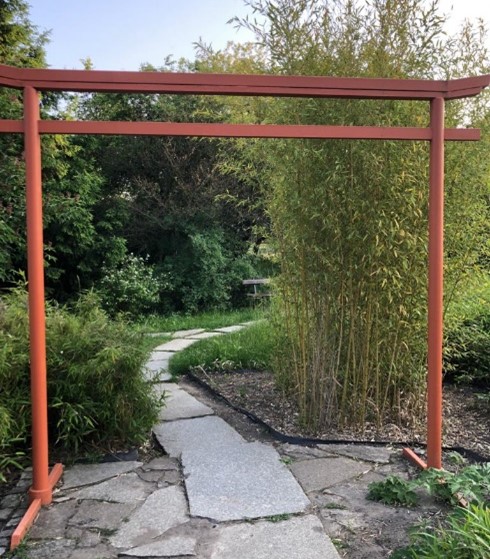
Japanese garden entrance in Poznań’s Botanical Gardens Picture taken by Dr. Sanchez
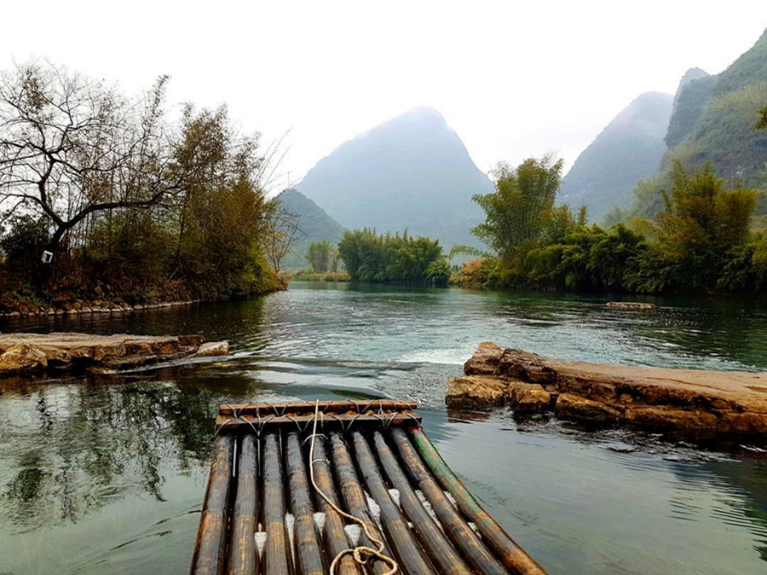
Yulong River (Yangshuo County, China), Picture taken by Dr. Zhao
Since 2019, the Wilderness Medical Society (WMS) has been a strong supporter of fostering greenspaces for outdoor recreation and therapy research. In a thought-provoking WMS article written by Dr. Carolyn S. Meyer, MD, our community was introduced to a collection of pioneering pilot studies on this topic. Since then, research has exponentially grown on this captivating subject.
In 2021, an international group of researchers analyzed 40 unique systematic reviews revealing robust positive correlations between greenspace immersion and a kaleidoscope of health metrics. These metrics include improved mental well-being, increased physical activity levels, augmented immune function, improved cardiovascular health, and enhanced sleep quality.
Echoing prior studies, the data in the 2021 umbrella review also reinforced the notion that greenspace exposure is linked to a reduction in overall cardiovascular risk factors, including decreasing heart rate and diastolic blood pressure while elevating levels of beneficial high-density lipoprotein (HDL).
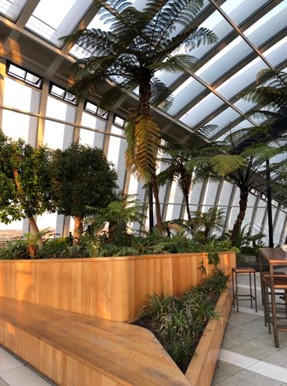
View inside London’s Sky Garden, Picture taken by Dr. Sanchez
Researchers also found abundant evidence supporting greenspaces’ impacts on psychological well-being. Specifically, greenspace interaction exhibited a strong positive correlation with improved cognitive faculties, encompassing cognitive development, attentional capabilities, and improvement of symptoms of dementia and other mental health diseases. One massive cohort study in Taiwan concluded a significant reduction in the incidence of schizophrenia when there was increased greenspace exposure.
In our exploration of the burgeoning field of greenspace research, empirical evidence is emerging that suggests remarkable possibilities for the future. One University of Michigan study used a linear regression model to predict a 21.3% reduction in cortisol per hour of greenspace exposure, regardless of activity type. Studies such as these are paving the way for the quantification of a nature prescription. Likewise, a 2022 systematic review suggested that small-scale exposures to simulated natural environments can have beneficial effects such as stress reduction and attention improvement.
Simulated exposure to smaller amounts of nature in built environments can also broaden and diversify the population benefiting from nature-based interventions. While studies in this area are significantly fewer, the preliminary research is encouraging. For example, a case study on aromatherapy has been associated with reduced stress in healthcare workers. Additionally, preliminary studies on indoor gardening and nature views have shown improvements in participant well-being. These modalities could extend the benefits of nature exposure to those who have limited opportunities or access to outdoor experiences. Thus illuminating the vast potential of greenspaces in shaping a healthier, happier world!
Limitations of Greenspace Research
Despite the abundance of new data on greenspaces, significant research limitations must be considered before drawing any definitive conclusions. The term "greenspace" varies in definition across the literature, and standardized tools for its measurement across diverse climates are scarce. For example, the Normalized Difference Vegetation Index (NDVI) is a graphical indicator that quantifies the greenspace around a specific location by assessing vegetation density through satellite imagery. However, applying the NDVI to a variety of complex natural environments (e.g., deserts, coastlines, bodies of water), climates, and seasons, poses challenges due to its reliance on vegetation as a metric for greenspace.
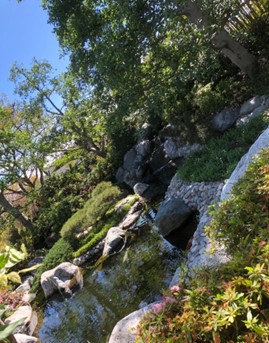
Japanese Friendship Garden in Balboa Park (San Diego, California), Picture taken by Dr. Sanchez
In research that does use the NDVI, there is evidence that areas scoring high on the index have been associated with reduced levels of stress, anxiety, blood pressure, cardiovascular mortality, and risk of developing metabolic syndrome as well as improved immunity, cognitive function, attention, and creativity. These correlations are impressive; however, the lack of NDVI standardization and adaptability limits the analysis on a broader scale.
The 2021 umbrella review highlighted the limitations in the research: primarily the absence of well-developed research protocols across the studies, leading to risks of sampling, selection, and within-study bias. Furthermore, the majority of studies examined in the umbrella review failed to provide explanations for omitted data, a significant risk factor for inclusion or exclusion bias. Thus, despite primary studies supporting the correlation between greenspace exposure and health benefits, the varying research methods employed have made it difficult to strongly corroborate their findings to date.
What about Bluespaces?
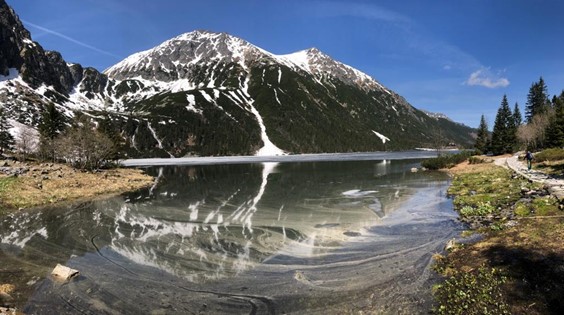
Morskie Oko in the Tatra Mountains (Poland), Picture taken by Dr. Sanchez
While there is a growing amount of research on greenspaces, there is comparatively less regarding health impacts due to bluespaces, or water bodies. As with greenspaces, bluespaces may improve health by reducing heat islands in urban settings and mitigating air and noise pollution. Bluespaces may also increase outdoor physical activity and promote development of social interaction and cohesion. Unfortunately, as demonstrated in one systematic review, there is more research published on greenspaces compared to bluespaces' impact on health. Additionally, most of the existing research focuses on coastal environments, with less data on inland waters and urban bluespaces. The paper brought to attention that, unlike greenspace studies which often used the NDVI, bluespace studies do not have any specific index and instead were measured by “coastal residence” or distance to “waterfronts/blue areas”. Similar to greenspace research, the lack of standardization for measuring bluespaces is a major limitation for future research.
Conclusion
The prescription of greenspaces is an emergent facet of a more expansive trend towards lifestyle medicine – a multidisciplinary field that underscores the primacy of lifestyle variables such as diet, physical exercise, and stress management in the prophylaxis and amelioration of chronic illnesses. By integrating natural settings into healthcare regimens, clinicians have the potential to promote superior health and quality of life for their patients.
Notwithstanding the methodological limitations pervading the current research landscape, an overwhelming preponderance of scholarly investigations substantiates both the correlative and causal relationships between greenspace exposure and enhanced health metrics. To date, only a negligible number of studies indicate any deleterious effects, thereby bolstering the argument for the incorporation of natural settings into both individualized and collective health policies. Strategic urban planning for the inclusion of greenspaces, along with the preservation of existing natural spaces, may significantly improve the health status and general well-being of individual citizens and communities alike.
To further promote the trend towards the prescription of natural settings, forthcoming research endeavors should prioritize the establishment of a uniform, quantifiable methodology for measuring green and bluespaces and their consequent impacts on human health indices. Furthermore, given the inherent importance of bluespaces as a natural constituent, the current dearth of scholarly publications focusing on the health impacts of bluespaces presents a compelling avenue for future academic inquiries. Let's take action by immersing ourselves in green and bluespaces and championing the prescription of nature's healing power to elevate human health.